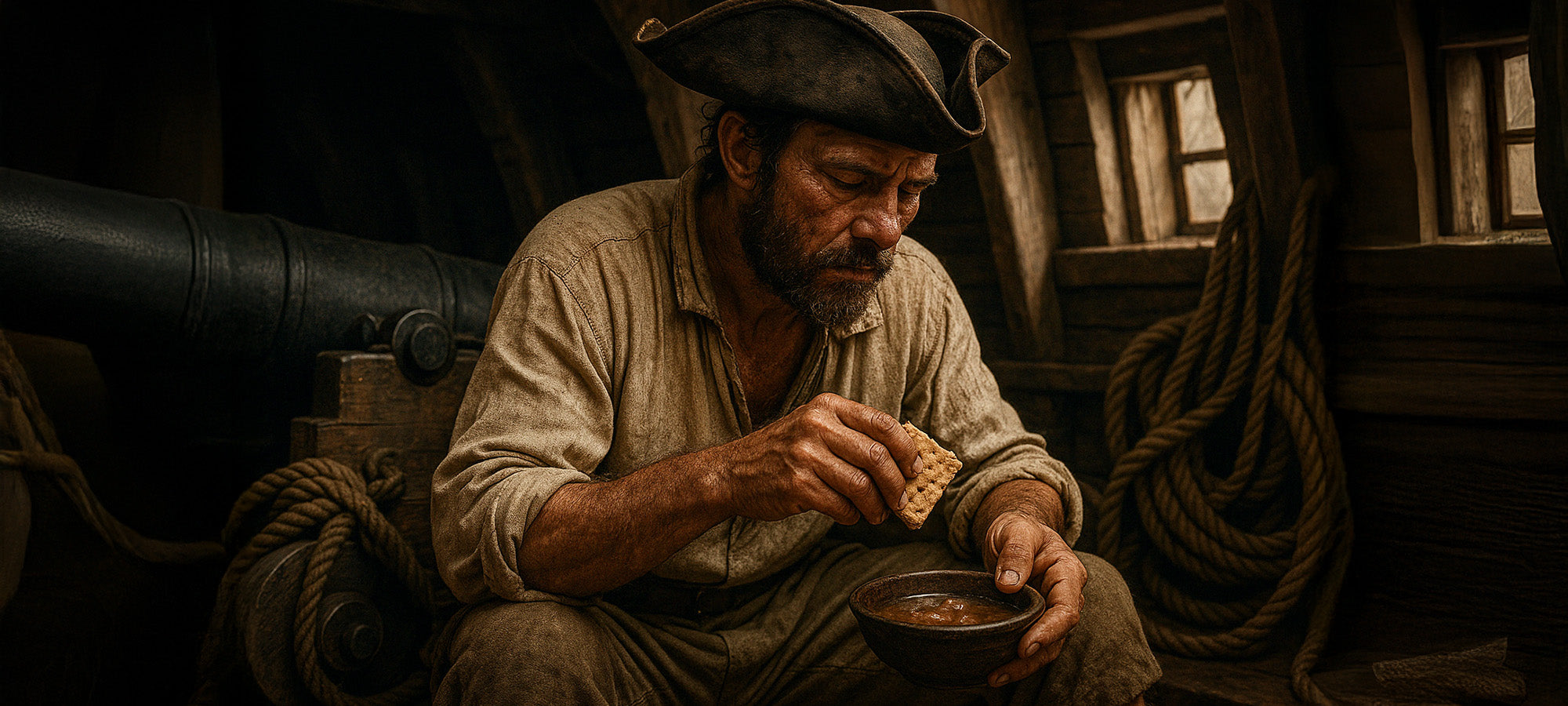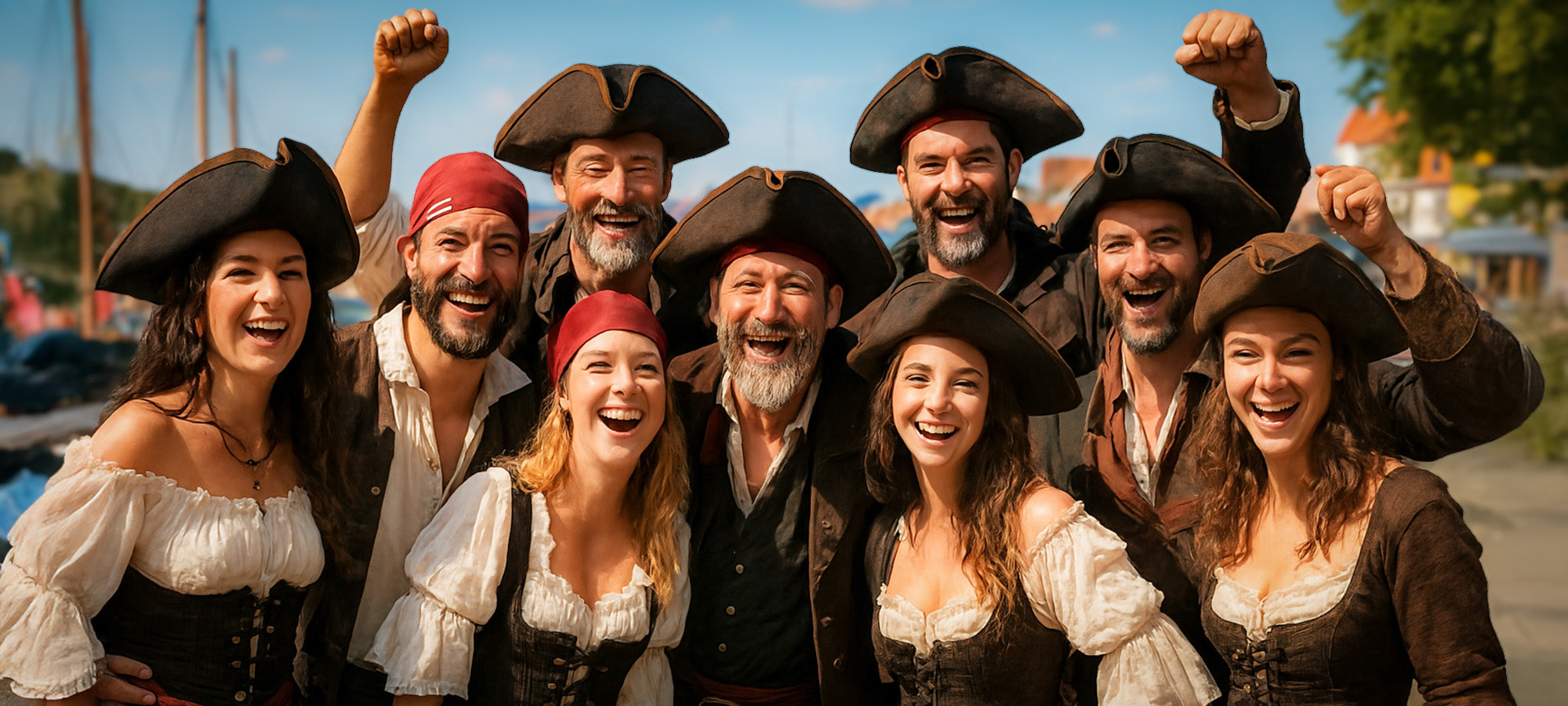Article: Pirate Food: Cuisine Onboard Ship During the Golden Age of Piracy

Pirate Food: Cuisine Onboard Ship During the Golden Age of Piracy
When we think of swashbuckling pirates and naval crews of the 17th and 18th centuries, images of tall ships, hidden treasure, and cannon battles usually come to mind. But behind the scenes—and often below decks—men of the sea faced another, more constant concern: their daily rations. Food was never an afterthought to these daring adventurers; it was a critical element of survival, morale, and even strategy. Here’s a look at what often filled the bellies of seafarers during the Golden Age of Piracy.
Hardtack: The Bread that Never Spoiled (Much)
One of the most iconic staples on a pirate or naval vessel was hardtack, sometimes called “ship’s biscuit.” Made of flour, water, and a pinch of salt, this dense cracker was baked until it was nearly inedible. The purpose? A long shelf life. Hardtack was intended to resist mold, insects, and decay—although, on long voyages, weevils often infested hardtack rations. Sailors would frequently soften the biscuits by dipping them in water, broth, or rum to make them more edible.
Salted Meat and Fish: A Cure for Spoilage
Fresh meat and fish rarely stayed that way for long on a wooden ship without refrigeration. To preserve their protein sources, crews relied on salting, pickling, and smoking. Large barrels held salted beef, pork, or cod, which could remain edible for extended voyages. However, the high salt content meant the food was tough and required soaking or boiling before consumption. To liven things up, sailors might add onions, garlic, or local herbs they gathered while in port. But invariably, such luxuries rarely lasted long.
Limited Fresh Produce: Fighting Off Scurvy
The scarcity of fresh fruits and vegetables led to severe nutritional deficiencies on long voyages. Scurvy, a disease caused by a lack of vitamin C, was a constant threat. If they were fortunate, crews might carry lemons, limes, or other citrus early in the voyage. Once those ran out, and if they didn’t stop at ports, pirates and naval seamen alike were at high risk. Navies eventually recognized the importance of citrus, leading to the nickname “limeys” for British sailors. Pirates, who often raided coastal towns or made frequent port calls, might fare slightly better in obtaining fresh produce—at least sporadically.
Cheese and Butter: Short-Lived Luxuries
While dairy items like cheese and butter frequently appeared in ships stores, such luxuries could only be enjoyed at the start of a journey. Salted or smoked cheeses had a longer shelf life, while butter was either heavily salted or kept in sealed containers.
Water, Beer, and Grog: The Essential Pirate Drinks
Clean drinking water was difficult to maintain on long voyages. Stored in wooden casks, water could develop algae and become putrid. To mitigate these issues, sailors relied on beer, ale, and later, grog—a mixture of rum, water, sugar, and lime juice. Grog served dual purposes: it diluted the strong rum, reducing drunkenness during essential tasks, and provided vital vitamin C from the citrus, inadvertently helping fend off scurvy.
Rum: The Pirate’s Signature Beverage
Yo ho ho… No pirate tale is complete without a tankard of rum. Distilled from sugarcane or molasses, rum became the unofficial spirit of pirates in the Caribbean. It was relatively cheap, readily available in tropical regions, and far less perishable than other spirits. While rum certainly contributed to merriment and morale, excessive consumption could lead to discipline problems on board—though pirates were less rigid about rules than naval crews.
Spices, Sauces, and Creative Cooking
Whenever possible, resourceful cooks on board would try to make life at sea more palatable. Spices like pepper, mustard seeds, or even local seasonings acquired from port stops could mask the staleness or saltiness of rations. If the crew had a decent cook, they might prepare stews combining salted meat with onions, garlic, or whatever vegetables could be found. These stews not only stretched the limited provisions but also offered a comforting hot meal in rough conditions.
Fresh Fish: Raiding the Ocean’s Bounty
Although one might assume that 17th- and 18th-century sailors could rely on the sea for an endless supply of fresh fish, in reality, fish (and occasional seabirds) were often a last resort. One reason is that most fish remain close to coastal waters, making them harder to catch far from shore. Another is the sheer impracticality of trying to fish from a heavily armed vessel, especially when it was constantly on the move.
Nevertheless, in times of need or in calm coastal waters, pirates would often supplement their rations by fishing and hunting whatever marine life they could find to add variety and fresh protein to their diets. Here are some of the primary foods they would catch at sea:
Fish: Sailors would frequently catch fish using lines and hooks trailed behind the ship or tossed over the side when conditions were calm. Popular catches included cod, mackerel, tuna, and other schooling fish they encountered during their route.
Flying Fish: In warmer waters, flying fish would sometimes land on a ship’s deck after gliding above the waves. Quick-thinking crews scooped them up, providing an unexpected (and welcome) source of fresh meat.
Sea Turtles: Turtles, especially in tropical regions, were often prized for their meat. If a crew sighted them at the surface or near islands, they might capture turtles for a relatively fresh and nutritious meal.
Dolphinfish (Mahi-Mahi): Also referred to simply as “dolphin” in old ship logs (not to be confused with the mammal), these brightly colored fish were sought after in warmer waters. Their size and relatively rich, flaky meat made them a favored catch.
Sharks: Although less common, some crews did fish for sharks. The meat, however, required careful preparation to be palatable, often involving soaking or pickling.
Seabirds: In more desperate situations or when fish were scarce, sailors might hunt seabirds (like gulls or albatross), especially those landing on the rigging. The taste was generally described as “oily,” but it provided essential protein when rations ran low.
Pirate vs. Naval Fare: Similarities and Differences
Despite popular belief that pirates dined lavishly on looted goods, the reality was much the same as any ship at sea: they ate salted meats, hardtack, and what fresh produce they could get from raids or coastal trading. However, pirates often had more freedom to barter or seize exotic ingredients from merchant vessels, which could lead to more varied diets in the short term. Naval ships, on the other hand, followed strict rationing policies, which sometimes meant monotonous meals—but also a more predictable supply of staples and high calorie content.
During the Golden Age of Piracy, life at sea was a constant battle against time, weather, and supplies. While time and weather were a matter for the divine, seafarers did what they could to ensure their supplies. From salty, jaw-breaking hardtack to the all-important rum and grog, 17th- and 18th-century pirate cuisine was a testament to survival, ingenuity, and the unquenchable thirst for adventure. While the menu may not have been gourmet, these provisions played a crucial role in fueling the daring exploits and historical journeys that continue to capture our imaginations today.

